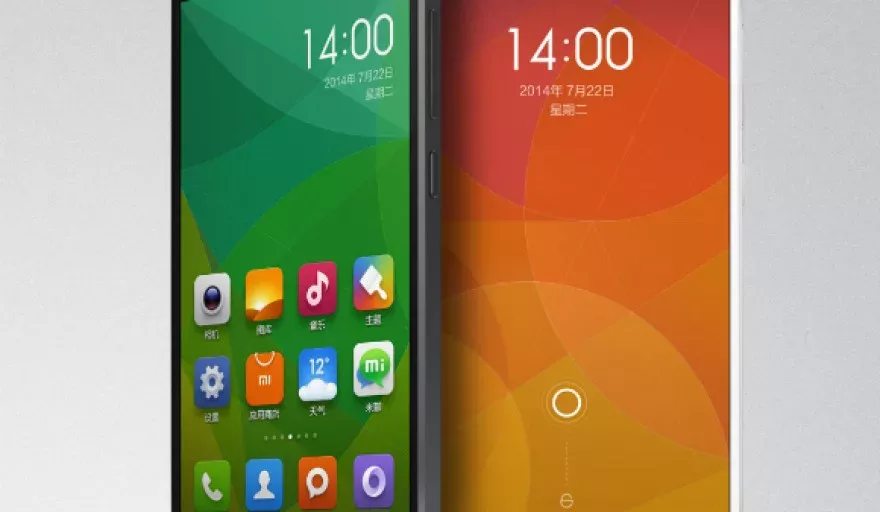Last year, Xiaomi became the world’s most valuable tech startup Company, a status which is representative of its climb from zero to a valuation of US$45 billion in just four years. Having surpassed Huawei to become the third largest smartphone maker in the world, China’s Xiaomi is emerging as a serious contender in the mobile market, with the potential to challenge the big two – Samsung and Apple – in its sights.
This meteoric rise to fame for the now-smartphone giant was a result of China’s growing prominence as an economic superpower that continues to grow at an incredible rate; with the country’s manufacturing industry generally holding steady in recent times.
Apple currently represents a seven percent market share in China, and Xiaomi is hot on its heels with a six percent share and eagerness to take the number one position not just in its home market, but across the world’s emerging economies through an initial expansion focus that will see its unique business model deployed in India, Brazil and other Asian countries; leveraging the substantial population in these territories to secure the highest smartphone sales figures in the world.
STEPPING UP EXPECTATIONS
Xiaomi’s rise to prominence is partly based on its ability to create cost-competitive smartphones and tablets while maintaining all the specifications that would be expected from a high-end device. Large screens and high build quality at half the cost compared to Samsung and Apple products are key differentiating factors that keep the pressure on these dominant names in technology.
Having been criticised for its likeness to the iPhone 5S, the newly released Xiaomi Mi4 has a stainless steel metal frame with the remainder of the case made from plastic with interchangeable plastic covers that are available in a variety of colours and fake wood finishes. Similarly, like the Samsung Galaxy line, the Mi4 features an Android-offshoot proprietary operating system, the MIUI 6 OS, which is based on Android’s 4.4 KitKat.
As the national underdog in the global phone market, Xiaomi is driving down the average device costs faster than other makers, according to market research; and its web distribution model cuts at least 10 percent out of the price of each mobile phone through online selling only, cutting out the middleman margins. The devices are a far cry from the poor quality reputation that has plagued China’s manufacturing industry for decades, retaining a sale price that is as close to the cost price as possible.
In a way, the Mi4 smartphone and Mi6 tablet pair together arguably two of the best loved elements from each handset so as to create something new; however the blatant similarities are difficult for any competitor to ignore and the issue will no doubt come to a head soon, for better or worse. Xiaomi Co-Founder, Lin Bin has previously said that while intellectual property issues were one factor in its global strategy, it was not their biggest concern.
CONTRACTING MARKET
As a largely domestic Company still, Xiaomi’s fortunes are closely tied to the purchase patterns of Chinese consumers, which has been harboured in 2015 by flatlining sales as the country’s smartphone market shows little signs of growth.
During the first half of 2015, Xiaomi shifted an impressive 34.7 million smartphones, representing 33 percent growth year-on-year. While this may seem like considerable growth, the figure is exactly the same as the one achieved in the previous six months, which has called for the Company to explore the possibility of venturing into other Asian territories; including Singapore, Malaysia, the Philippines and Indonesia.
Most recently – after some serious investment in 2014 – Xiaomi was able to expand into Brazil, another fast-emerging economy that marked its first non-Asian market entry. The Company’s launch here attracted a significantly larger crowd than initially planned for when close-to 8,000 people applied to attend a launch with only 1,500 available seats. It was reported that a few travelled from a town near the Amazon rainforest and the surrounding regions that would have required a 24-hour bus ride. This response prompted a snap decision to hold a second launch event three hours later on the same day.
INDIA AND BEYOND
In addition, the Company was banned then subsequently reinstated to sell its smartphones in India after Swedish-based Ericsson entered a patent infringement suit claiming that Xiaomi’s handsets used its patented technologies without permission.
Accompanying the announcement of its first manufacturing facility in Sri City, Andhra Predesh this year, Xiaomi announced the imminent launch of the first Xiaomi smartphone – the Redmi 2 Prime – to be manufactured in India. The Company was able to form a partnership with a local company as part of the ‘Make in India’ programme, however, it will have to amend its online business model to bring the devices in-store to cater for India’s preferred method of sale.
Xiaomi’s expansion into Brazil and India could not have come at a better time as China’s smartphone market has recently started to contract, which had become a potential worry for investors who have supported the brand throughout the years. These investors are key to securing a global future for Xiaomi’s products and creating a dominant brand presence, similar to that of its home country that can rival the customer pull of Apple and Samsung.
Brazil and India is just the beginning of the Company’s foray into new territories as it has secured soft entry into Europe and the US via its online shop, where the popular Mi smartphone is nowhere to be seen due to pending resolution of patent issues.
However, the online store has launched with four of the Company’s most sturdy but small-time products: the Mi semi-open headphones, Mi Band activity and sleep tracker and two sizes of the portable Mi Power Banks for charging on the move.
SHIFTING INTERESTS
China has been at the forefront of smartphone growth in recent years, but as the market begins to contract, Xiaomi is reacting in order to continue on its aggressive growth path by moving into new countries and learning how best to operate.
According to the latest research from Strategy Analytics, global smartphone sales are forecast to grow from 1.5 billion units in 2015, to a record 1.7 billion by 2017; with China accounting for 458 million of these, rising to 505 million in two years.
Driven by low smartphone penetration rates, expanding retail availability of devices, wealthier middle-class consumers and an aggressive approach to brand promotions, India is the market that Xiaomi is keen to watch. Here, it is forecast that 118 million smartphones will be sold in 2015, sharply rising to 174 million in 2017; making India the second largest smartphone adopters by volume in two years time.
By identifying some of the world’s fastest emerging economies as crucial areas for sustainable business, Xiaomi’s main focus is to now access previously untapped and developing markets where the higher overall population means the mobile market is less saturated; in turn, boosting device sales figures with the hope of beating rivals Apple and Samsung in a competition that could change the face of telecoms in the long-term.
Read the in-depth article in the latest edition of APAC Outlook here.
































